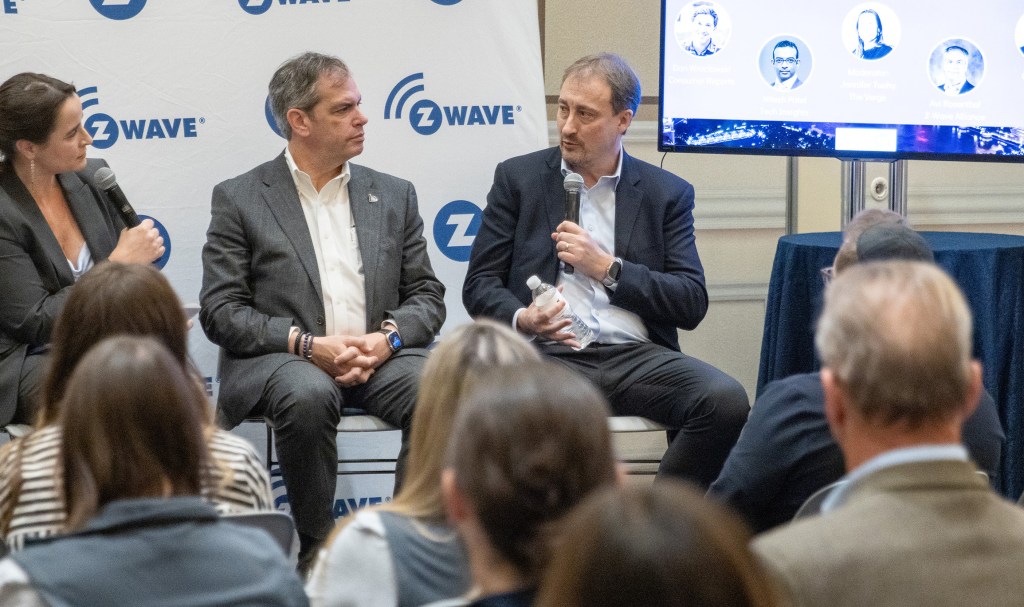
Sometimes the “smarter” your home technology gets, the dumber you can feel. But it’s not your fault. When smart devices like speakers, thermostats and security systems made by different manufacturers don’t speak the same language, it can lead to poor interoperability — and frustration for the homeowner.
At CES 2025 in Las Vegas, Gilles Drieu, ADT’s Chief Technology Officer, laid out ADT’s vision for the future, where smart devices integrate effortlessly with home security systems, all within a unified and interoperable network that actually feels smart.
At the heart of this goal is connecting two dominant yet divergent communication protocols — Matter and Z-Wave. “It’s not enough for devices to be smart individually,” Drieu said during his CES panel. “They need to be part of a smart ecosystem.”
The interoperability problem
Matter, a favorite of smart home players like Apple, Amazon and Google, simplifies device setup and improves compatibility across different brands. Z-Wave has deep roots in home security, and is known for its reliability, safety and long-range capabilities. While both protocols have obvious strengths, their communication challenges with each other can hinder full-home ecosystem integration and frustrate customers.
As the number of connected devices grows, so does the need for them to work together. “Our industry has made incredible strides in innovation, but aspects of the user experience still lag,” Drieu said. “People don’t want to be technicians in their own homes. They just want it all to work.”
Our industry has made incredible strides in innovation, but aspects of the user experience still lag. People don’t want to be technicians in their own homes. They just want it all to work.
Gilles Drieu, ADT Chief Technology Officer
Bridging the divide
ADT’s solution is both ambitious and pragmatic. The company aims to bridge the gap between Matter and Z-Wave, creating a cohesive ecosystem where devices from both protocols can coexist.
While Matter and Z-Wave operate on different frequencies and methodologies, ADT’s new hub technologies will act as a universal translator, enabling communication between the two without requiring users to lift a finger. “And, within that, security is non-negotiable,” Drieu said. “As we bring these systems together, we’re ensuring that users don’t have to compromise their data or peace of mind.”
A seamless future
As the smart home market is expected to exceed $195 billion by 2027, consumers will demand solutions that simplify their lives. ADT’s focus on interoperability could become the linchpin for the connected home.
“We’re creating an environment where your smart lock talks to your thermostat, your lights and your security system, without you having to think about it,” Drieu said.
“With better interoperability, everyone wins," said Avi Rosenthal, Chairman of the Z-Wave Alliance. "If you look at the changes that have happened in the last five years within the smart home market, you’ll realize that it’s not just raised the tide, it’s raised all the boats, the sailors, the cargo — everything.”
A new era for ADT
“We’re not just in the business of securing homes anymore,” Drieu said. “We’re in the business of enabling a better way of living. That’s what interoperability is really about — it’s about making life easier, safer and more connected.”
The future will be built on interconnected ecosystems, and ADT is positioning itself to lead the charge. For consumers, this means a smart home where technology serves them — not the other way around. And for the industry, it’s a reminder that the greatest innovation lies in simplicity.